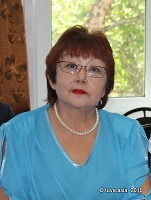Tuvan folklore in the years of People’s Republic of Tuva
Keywords:
People’s Republic of Tuva (PRT); «Uriankhai. Tyva depter»; folklore texts; folklore studies in Tuva; Scholarly Committee; mass media; history of TuvaAbstract
The article looks at the early stages of Tuvan folklore studies. Its roots go back to the 19th century when Tuvan folklore was collected and analyzed by Russian orientalists, scholars and travelers, such as V.V. Radlov, G.N. Potanin, N.F. Katanov, F.Ya. Kon, etc. They wrote down and later published samples of almost all genres of Tuvan folklore. Since these invaluable notes laid the foundation for studying Tuvan folklore and literature, it is important to take a closer look at the materials collected in this period (Most of them have been published in the “Uriankhai. Tyva depter’ anthology (Moscow, 2007-2009)).
After the People’s Republic of Tuva declared independence in 1921, a new stage in Tuvan folklore studies has begun. It was in this period that alongside with collecting new material, folklore studies began as a truly scholarly discipline after the new system of writing was introduced. The first research and cultural institutions, such as the Scholarly and Press Committee at the PRT Cabinet of Ministers (the predecessor of Tuva Research Institute for Language, Literature and History (TNIIYaLI)), devoted themselves to collecting, studying and publishing Tuvan folklore. Regional newspapers called upon their readers to help write down old legends, folk songs and tales. Folklore texts found their way into the first ABCs and textbooks for Tuvan schools, as well as into specialized folklore anthologies. In 1939 the first book on literary and folklore studies appeared – S. Piurbiu’s ‘Anyiak chogaalchylarga duza’ (A young writer’s adviser). It aimed to help young authors and critics understand the terminology and genre systems of both literary fiction and folklore.
Our study is based on the analysis of contemporary reprints of early 20th century texts and collections, as well as research articles, general audience scholarship, folklore anthologies, newspaper articles and other texts published in the People’s Republic of Tuva.
References
Gor'kii, M. (1955) O literature. Moscow, Sovetskii pisatel'. 903 p. (In Russ.).
Dongak, U. A. (1999) Tuvinskoe stikhoslozhenie, Abstract of dissertation… Candidate of Philology. Kyzyl. 20 p. (In Russ.).
Istoriia Tuvy (2007), ed. V. A. Lamin. Novosibirsk, Nauka. Vol. II. 430 p. (In Russ.).
Kalzan, A. K. (1962) Stanovlenie tuvinskoi dramaturgii : Abstract of dissertation… Candidate of Philology. Leningrad. 20 p. (In Russ.).
Kalinichev, P. (1943) Fol'klor tuvinskogo naroda. In: Pod znamenem Lenina-Stalina, no. 1–2, pp. 65–73. (In Russ.).
Orus-ool, S. M. (2001) Tuvinskie geroicheskie skazaniia (Tekstologiia, poetika, stil'), ed. V. M. Gatsak. Moscow, MAKS PRESS. 424 p. (In Russ.).
Orus-ool, S. M. (2010a) O tuvinskoi fol'kloristike: osnovnye napravleniia. In: Tuvinskaia pis'mennost' i voprosy issledovaniia pis'mennoi i pis'mennykh pamiatnikov Rossii i Tsentral'no-Aziatskogo regiona». Materialy Mezhdunarodnoi nauchnoi konferentsii, posviashchennoi 80-letiiu tuvinskoi pis'mennosti (g. Kyzyl, 1-4 iiulia 2010 g.) : in 2 vol. Kyzyl. Vol. 2. Pp. 79–85. (In Russ.).
Orus-ool, Ch. K. (2010b) Fol'klornye materialy v semitomnike «Uriankhai. Tyva depter». Novye issledovaniia Tuvy, no. 3 [online] Avalable at: http://www.tuva.asia/journal/issue_7/2137-orus-ool.html (access data: 12.05.2016). (In Russ.).
Piurbiu, S. (1939) Anyiak chogaalchylarga duza (V pomoshch' molodym pisateliam). Kyzyl, Pisatel'skii komitet. (In Tuv.).
Samdan, Z. B. (1987) Ot fol'klora k literature (na materiale proizvedenii 40-70-kh godov). Kyzyl, Tuvinskoe knizhnoe izdatel'stvo. (In Russ.).
Serdobov, N. A. (1971) Istoriia formirovaniia tuvinskoi natsii. Kyzyl, Tuvinskoe knizhnoe izdatel'stvo. 482 p. (In Russ.).
Tyva literatura. Dopchu tөөgү (1964) / ed. A. A. Pal'mbakh, Iu. L. Aranchyn and A. K. Kalzan. Kyzyl, TyvN/Ch. 240 p. (In Tuv.).
Tyva sovet literaturanyң dopchu tөөgүzү (1975), A. K. Kalzaң, M. A. Khadakhane and D. S. Kuular, ed. S. M. Khitarov. Kyzyl, TyvN/Ch. 330 p. (In Tuv.).
Uriankhai. Tyva depter (2007–2009): in 7 vol., comp. S. K. Shoigu. Moscow, Slovo.
Uriankhai. Tyva depter (2007a): in 7 vol., comp. S. K. Shoigu. Moscow, Slovo. Vol. 5. Uriankhaiskii krai: ot Uriankhaia k Tannu-Tuve (konets XIX — pervaia polovina XX vv.). 736 p. (In Russ.).
Uriankhai. Tyva depter (2007b): in 7 vol., comp. S. K. Shoigu. Moscow, Slovo. Vol. 6. Tannu-Tuvinskaia Narodnaia Respublika (1921–1944 gg.). 584 p. (In Russ.).
Uriankhai. Tyva depter (2008): in 7 vol., comp. S. K. Shoigu. Moscow, Slovo. Vol. 7. Drevnosti Tuvy. Arkheologicheskie pamiatniki (bronzovyi vek – konets XIX veka). 912 p. (In Russ.).
Chyyndy chogaaldar (1939), ed. Oidup. Kyzyl. (In Tuv.).
Published
How to Cite
Issue
Section

Author(s) license holder(s) grant rights for their work to the journal (grantee of a license) under the simple non-exclusive open license in accordance with Art. 1286.1 «Open license for a research work, work of literature or fine arts», Civil Code of the Russian Federation.
New Research of Tuva publishes articles under the Creative Commons Attribution-NonCommercial license (CC BY-NC).
Since it is an open license, author(s) reserve the right to upload the article to their institutional repository, submit it to another journal (if it allows republications), or republish it on their own website (in full, or in part).
However, several conditions apply here:
a) The republished version must always contain the name(s) and affiliation(s) of the author(s), the original title and the hyperlink to the original version on the New Research of Tuva website;
b) It must be in open access, free of charge, and no category of readers must be in any way whatsoever advantaged over general readership.
c) should the contribution be submitted elsewhere by its author(s) without substantial modification (30% or more of original text unchanged), the body of the article should contain a disclaimer that the original version was published in New Research of Tuva (with a link to the respective page)
The CC-BY-NC is a non-revocable license which applies worldwide and lasts for the duration of the work’s copyright.





